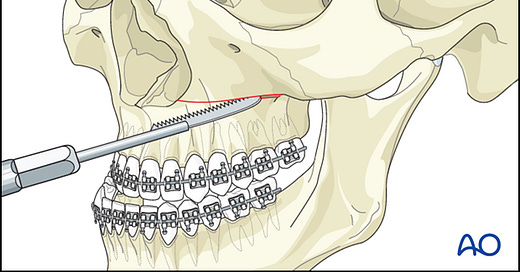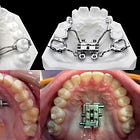5.4 MARPE Surgical Assists - From Least to Most Invasive
From cortical punctures to EASE, and everything in between
This is Chapter 5.4 of the JawHacks ebook. See the full Table of Contents here.
Intro to Surgical Assists

Splitting and expanding the maxilla involves two primary variables: 1) strength of the expander and 2) resistance of the skull.
There are others key variables such as 3) direction of the expansion force (that determines symmetry) and 4) amount of expansion (that determines occlusal feasibility and aesthetic proportionality).
But before you can worry about asymmetry and over-expansion, you have to actually split the suture.
In chapter 5.2, we examined the first variable: different MARPE devices and their relative strengths.
In the current chapter, we will examine the second variable: surgical interventions that can reduce resistance of the skull against the appliance.
These surgical assists can range in invasiveness from cortical punctures along the mid-palatal suture done with a dental drill under local anesthesia (least invasive) all the way to DOME cuts (Distraction Osteogenesis Maxillary Expansion) under general anesthesia that begin to look a lot like orthognathic surgery.
The ideal approach, as we will see, lands somewhere in the middle.
Decoupling Devices from Surgical Assists
Any surgical assist can be used with any MARPE. The appliance and the surgical release are two completely different entities.
The only exception to this rule is SARPE, which requires the maximum level of surgical release (DOME cuts) because the expander device being used is actually tooth borne.

If the teeth are the expansion anchors, then full release of the maxilla and other circummaxillary sutures is necessary in order to prevent an overwhelming amount of dental or dentoalveolar expansion from occurring.
SARPE, being a tooth borne treatment modality, is not actually a kind of MARPE. But it is MARPE-adjacent and so worth mentioning here.
Let us now survey various MARPE surgical assists from least to most invasive.
1) Least Invasive - No Surgical Assist at All
MARPE can and has succeeded with no surgical assist at all. That is, a bareback TAD-anchored appliance can split the suture on its own. And this was the default approach in the early days of MSE.





